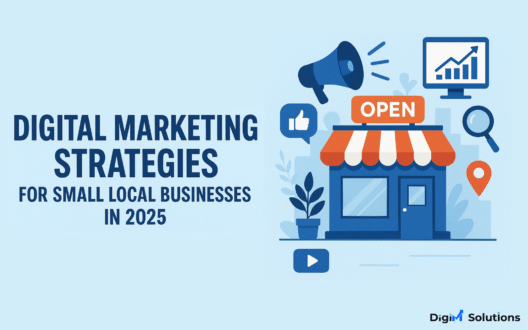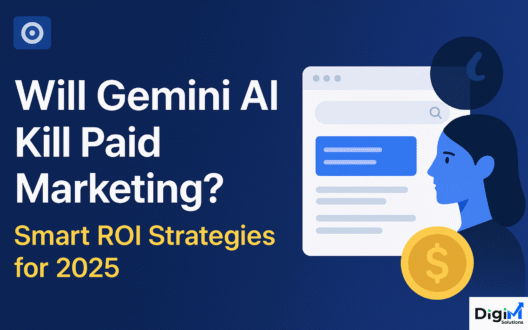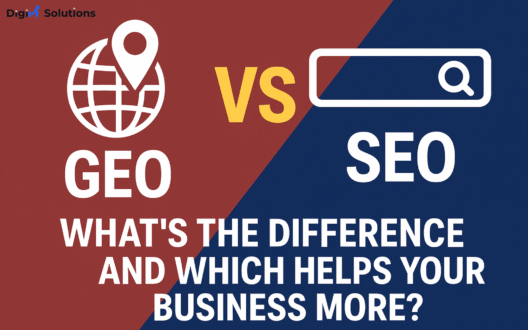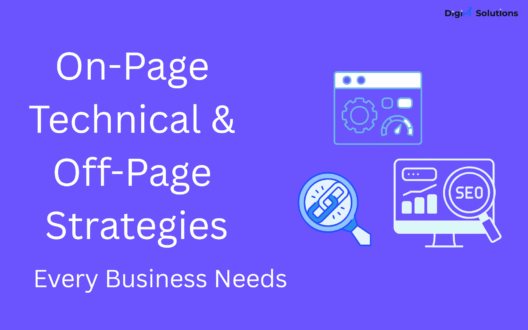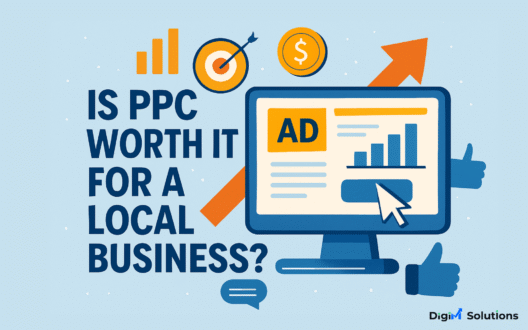Common SEO Mistakes Startups Make (and How to Avoid Them)
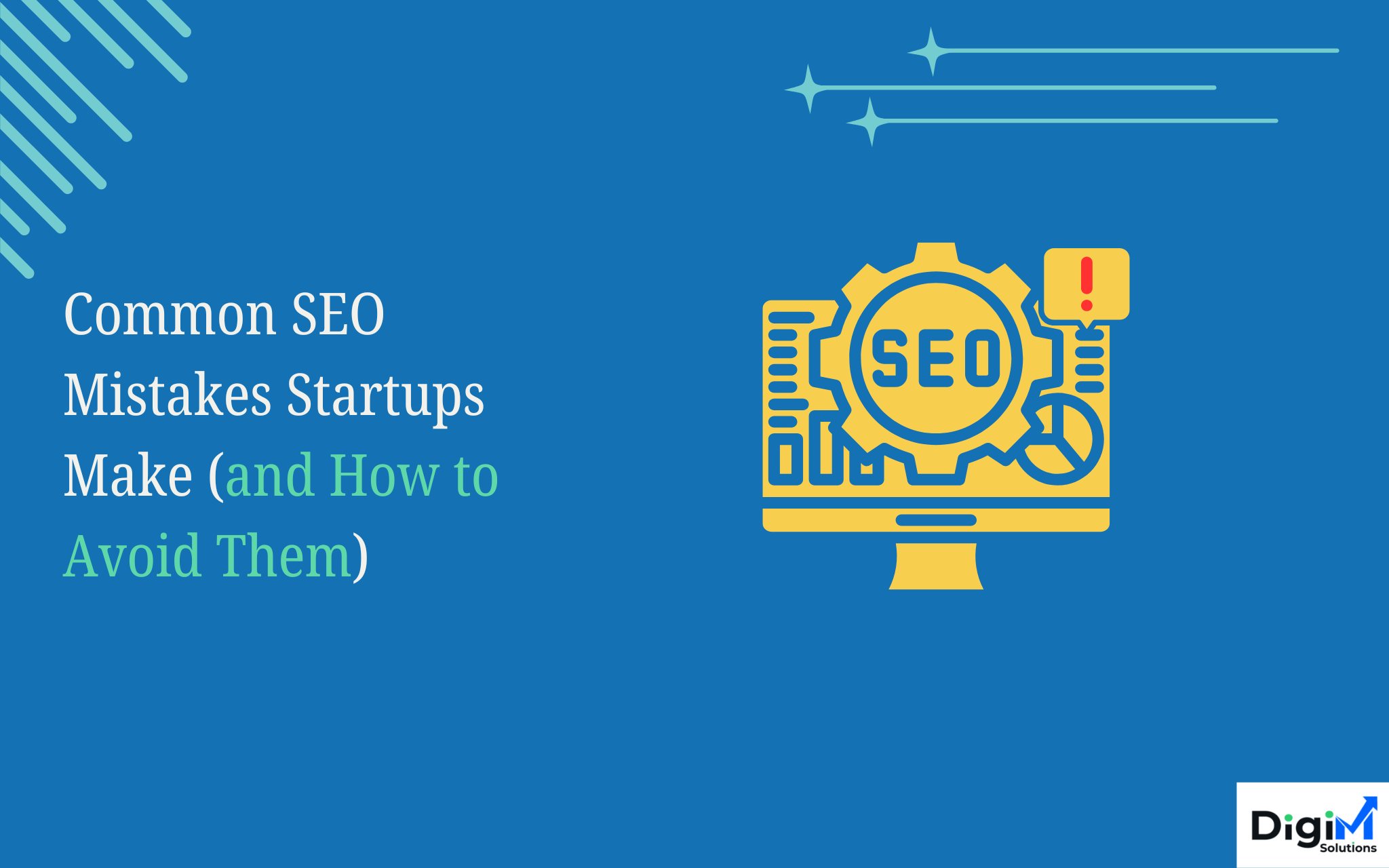
SEO plays a vital role in the success of any startup’s digital marketing strategy. However, many startups unknowingly make common SEO mistakes that hinder their online growth and search engine visibility. From poor keyword research and lack of quality content to slow website speed and ineffective link-building strategies, these issues can impact rankings and organic traffic. For startups, mastering SEO is essential for building a strong online presence and standing out in a competitive digital landscape.
In this complete guide, we’ll uncover the most frequent SEO mistakes startups make and provide practical tips and tricks to avoid them. Implementing the right SEO strategies, such as optimizing on-page elements, improving mobile responsiveness, and creating valuable, keyword-rich content, can significantly boost search engine rankings. Additionally, focusing on technical SEO aspects like proper site structure, faster loading times, and clean URLs ensures a seamless user experience that search engines favor.
By aligning your SEO efforts with an effective digital marketing plan, your startup can drive targeted traffic, generate leads, and achieve sustainable growth. Read on to discover actionable insights that will help you avoid costly SEO pitfalls and unlock your startup’s full potential online.
20 Unique SEO Mistakes and How to Avoid Them
1. Ignoring Keyword Research
Keyword research is the foundation of any successful SEO and digital marketing strategy. Startups often make the mistake of targeting highly competitive keywords or not conducting research at all. This leads to low search visibility and missed opportunities. Without proper keyword research, you risk creating content that doesn’t align with what potential customers are searching for, thereby wasting time and resources. Startups should understand user intent and choose keywords that reflect their audience’s needs. Conducting thorough research helps in identifying trends, potential traffic opportunities, and keywords that can drive qualified leads.
How to Avoid This Mistake:
Use tools like Google Keyword Planner, SEMrush, and Ahrefs to find relevant, high-traffic, low-competition keywords that align with user intent. Focus on long-tail keywords with lower competition that match user needs. Analyze competitor keywords and integrate them naturally into your content, meta tags, and headings. Continuous keyword analysis ensures your startup remains competitive in evolving markets. Regularly update your keyword strategy to stay relevant as search trends shift.
2. Not Optimizing for Mobile Devices
With the majority of online searches happening on mobile devices, failing to optimize for mobile can severely impact your search rankings and user experience. A non-responsive website can lead to high bounce rates, reduced engagement, and lower search rankings. Mobile users expect fast loading times, easy navigation, and a seamless experience. If a website isn’t mobile-friendly, potential customers will likely leave before exploring products or services. Mobile optimization also plays a crucial role in Google’s mobile-first indexing, where the mobile version of your site is prioritized for indexing and ranking.
How to Avoid This Mistake:
Adopt responsive web design that adjusts seamlessly to various screen sizes. Compress images for faster loading, simplify navigation, and use readable fonts. Regularly test your website’s mobile performance using Google’s Mobile-Friendly Test tool. Ensure that buttons and links are easily clickable, forms are simple to fill, and content is readable without zooming. A mobile-optimized site not only ranks better but also enhances user engagement and reduces bounce rates, ultimately leading to higher conversions.
3. Slow Website Speed
A slow-loading website frustrates users and negatively affects search engine rankings. Google uses page speed as a ranking factor, and even a few seconds’ delay can result in higher bounce rates. Slow websites diminish the user experience and reduce the likelihood of repeat visits. Startups that overlook website speed risk losing potential customers who prefer faster, more efficient alternatives. Page speed also influences crawl efficiency; if pages load slowly, search engines may not crawl and index all pages effectively, harming overall visibility.
How to Avoid This Mistake:
Compress images, use content delivery networks (CDNs), and minimize HTTP requests. Optimize CSS, JavaScript, and HTML files and leverage browser caching. Additionally, choose reliable hosting services that support fast loading times. Regular speed tests using tools like Google PageSpeed Insights will help identify performance issues. Implement lazy loading for images and videos, reduce server response times, and enable Gzip compression. These optimizations ensure your website runs efficiently, ranks higher, and keeps users engaged.
4. Poor Quality Content
Content is king in digital marketing, but low-quality content can harm your SEO efforts. Thin, duplicate, or irrelevant content fails to engage users and lowers rankings. Content that doesn’t address user intent, lacks depth, or offers little value leads to poor engagement metrics. Startups may be tempted to produce large volumes of content quickly, but without relevance and quality, it won’t yield positive SEO results. High bounce rates and low dwell times signal to search engines that your content doesn’t meet user expectations.
How to Avoid This Mistake:
Create high-quality, unique content that provides real value. Conduct thorough research to produce well-structured, informative articles targeting user needs. Incorporate keywords naturally without stuffing and include multimedia elements like images and videos. Regularly update and optimize content to keep it relevant and engaging. Focus on comprehensive guides, case studies, and original research that establishes your authority in the niche. Additionally, ensure proper grammar, readability, and logical structuring to enhance user engagement and search performance.
5. Lack of On-Page SEO Optimization
On-page SEO plays a critical role in determining how search engines understand and rank your content. Startups often overlook essential elements like meta tags, heading structures, and internal linking. Without proper on-page optimization, even the best content may not achieve its ranking potential. Missing or poorly optimized meta titles and descriptions can reduce click-through rates, while improper header usage hampers readability. Additionally, inadequate internal linking prevents search engines from effectively crawling your site and distributing page authority.
How to Avoid This Mistake:
Optimize meta titles and descriptions with relevant keywords. Use proper header tags (H1, H2, H3) for better content hierarchy and readability. Internal linking connects related pages, enhancing navigation and distributing page authority. Ensure image alt tags describe visuals accurately, aiding accessibility and SEO. Incorporate structured data (schema markup) to help search engines better interpret content. Maintain consistent URL structures and implement canonical tags to avoid duplicate content issues. These practices collectively improve search rankings and user experience.
6. Ignoring Technical SEO
Technical SEO ensures that search engines can efficiently crawl and index your website. Startups often overlook technical aspects like XML sitemaps, robots.txt files, and structured data. Issues like broken links, duplicate content, and slow server responses can prevent proper indexing. Without addressing these technical elements, even high-quality content may struggle to rank well. Additionally, technical SEO impacts user experience; poorly structured websites may confuse both users and search engines, leading to decreased visibility and higher bounce rates.
How to Avoid This Mistake:
Conduct regular technical audits using tools like Screaming Frog and Google Search Console to detect and fix issues. Ensure your XML sitemap is up-to-date and properly submitted to search engines. Optimize your robots.txt file to guide search engine crawlers. Use structured data to enhance search listings with rich results. Regularly check for broken links, duplicate content, and slow-loading pages. Implement HTTPS for security and improve server response times. These technical enhancements help search engines crawl your website efficiently and rank it appropriately.
7. Neglecting Local SEO
Local SEO is vital for startups targeting specific geographic areas. Ignoring it can limit visibility in local search results, affecting potential customer reach. Without local SEO, businesses miss out on customers searching for nearby services, resulting in lower foot traffic and sales. Google’s algorithm prioritizes local relevance; hence, failing to optimize for local searches leads to missed opportunities for brand visibility and conversions.
How to Avoid This Mistake:
Create and optimize a Google My Business (GMB) profile with accurate details. Collect positive customer reviews and respond promptly. Use local keywords in meta descriptions, titles, and content. Optimize for “near me” searches by adding location pages if operating in multiple areas. Implement local backlinks and engage with local directories. Consistent NAP (Name, Address, Phone Number) across platforms strengthens local search visibility.
8. Overlooking User Experience (UX)
User experience is a ranking factor in Google’s algorithm. Poor navigation, cluttered designs, and slow loading times lead to high bounce rates. Startups often focus solely on content and backlinks, ignoring how users interact with the site. A poor UX diminishes user satisfaction, reduces dwell time, and signals to search engines that the site offers low value.
How to Avoid This Mistake:
Design intuitive navigation with clear CTAs. Optimize page load speed and ensure mobile responsiveness. Use readable fonts, proper spacing, and visually appealing layouts. Conduct UX audits and usability tests to identify pain points. Incorporate interactive elements like chatbots or personalized recommendations for enhanced engagement.
9. Failing to Build Quality Backlinks
Backlinks remain a top-ranking factor in SEO. Startups that neglect link-building efforts miss opportunities for higher authority and organic traffic. Low-quality or spammy backlinks harm search rankings, while a lack of backlinks limits search engine credibility.
How to Avoid This Mistake:
Focus on acquiring backlinks from reputable sites through guest posting, influencer collaborations, and PR outreach. Create shareable content like infographics and case studies. Use broken link building strategies and participate in relevant industry forums to gain natural links. Avoid black-hat techniques like purchasing links, which can lead to penalties.
10. Not Utilizing Analytics for SEO Strategy
Without leveraging analytics, startups operate blindly, making uninformed decisions. Failing to track key SEO metrics means missing insights into what drives traffic, conversions, and user engagement.
How to Avoid This Mistake:
Integrate tools like Google Analytics and Google Search Console. Monitor metrics like organic traffic, bounce rate, keyword rankings, and conversion rates. Use A/B testing to determine what strategies work best. Regularly adjust your SEO tactics based on data insights to improve performance.
11. Keyword Stuffing
Keyword stuffing disrupts the natural flow of content, making it unreadable and harming SEO rankings. Overusing keywords not only affects the user experience but also risks triggering search engine penalties. Modern search algorithms prioritize context and intent over keyword frequency. Excessive keyword repetition makes content seem spammy, decreasing its credibility and engagement levels.
How to Avoid This Mistake:
Integrate keywords naturally in headings, meta descriptions, and body content. Focus on user intent by answering queries comprehensively. Utilize variations and related terms to avoid repetition. Leverage tools like Google’s NLP API to ensure semantic relevance. Write for humans first, ensuring that content remains informative, engaging, and accessible.
12. Ignoring Voice Search Optimization
Voice search adoption is increasing with virtual assistants like Alexa and Siri. Startups that ignore voice search optimization miss out on traffic from conversational queries. Voice searches are typically longer, more natural-sounding, and question-based. Failure to address this can reduce visibility in featured snippets and local searches.
How to Avoid This Mistake:
Focus on long-tail keywords and conversational language. Optimize content for featured snippets by providing clear, concise answers. Enhance local SEO, as many voice searches are location-specific. Improve page load times and mobile optimization, both critical for voice search rankings. Create FAQ sections that mirror natural speech patterns.
13. Not Updating Content Regularly
Stagnant content quickly becomes irrelevant in the fast-paced digital landscape. Outdated information decreases search rankings and diminishes user trust. Search engines favor fresh content as it signals relevance. Failing to update content regularly means missed opportunities for improved rankings and increased traffic.
How to Avoid This Mistake:
Conduct regular content audits to identify outdated information. Update statistics, refresh meta tags, and add new insights. Repurpose older content into new formats like videos or podcasts to extend its lifespan. Use internal linking to newer posts to distribute authority evenly across your site.
14. Ignoring Image Optimization
Images contribute significantly to SEO. Unoptimized images slow down page speed, leading to higher bounce rates. Missing alt text reduces accessibility and deprives search engines of context about the image.
How to Avoid This Mistake:
Compress images without compromising quality using tools like TinyPNG. Use descriptive, keyword-rich file names and alt attributes. Implement lazy loading to speed up page rendering. Adopt modern formats like WebP for faster loading times and better performance.
15. Lack of a Clear Content Strategy
An unclear content strategy leads to disorganized, ineffective SEO campaigns. Without a strategy, content may not align with user intent, resulting in low engagement and high bounce rates.
How to Avoid This Mistake:
Create a content calendar centered around audience needs and SEO objectives. Conduct keyword research to guide topic selection. Incorporate various formats like blogs, videos, and case studies. Establish KPIs to measure success and adjust tactics accordingly.
16. Not Leveraging Social Media for SEO
Social media doesn’t directly affect SEO rankings, but it significantly impacts search visibility through content sharing and link-building opportunities. Startups ignoring social media miss out on brand exposure and referral traffic.
How to Avoid This Mistake:
Promote SEO-optimized content across social platforms. Engage with followers to boost brand credibility. Integrate social sharing buttons on blog posts. Leverage influencer partnerships to expand reach and generate quality backlinks.
17. Duplicate Content Issues
Duplicate content confuses search engines, dividing ranking power and leading to decreased visibility. It can also affect crawl efficiency, preventing critical pages from being indexed.
How to Avoid This Mistake:
Audit content regularly with tools like Siteliner. Use canonical tags to signal the preferred version of duplicate pages. Implement 301 redirects for duplicate URLs. Write unique meta descriptions for every page to avoid duplication at the metadata level.
18. Not Securing the Website (HTTPS)
HTTPS is a ranking factor and essential for user trust. An unsecured website risks penalties and deters visitors concerned about privacy.
How to Avoid This Mistake:
Implement an SSL certificate and maintain it with timely renewals. Redirect all HTTP URLs to HTTPS. Monitor the site for security vulnerabilities and keep plugins updated to prevent breaches.
19. Ignoring Schema Markup
Schema markup enhances the way search engines read and represent content. Ignoring it means missing out on rich snippets, which can boost CTR and visibility.
How to Avoid This Mistake:
Add schema tags for articles, products, events, and reviews using Google’s Structured Data Markup Helper. Validate the markup with Google’s Rich Results Test. Regularly update schema to align with evolving SEO standards.
20 Neglecting Technical Audits
Technical issues like broken links, crawl errors, and slow page speeds can severely impact SEO. Without regular audits, these issues remain undetected, affecting rankings and user experience.
How to Avoid This Mistake:
Perform monthly audits using tools like Screaming Frog and SEMrush. Address crawl issues, update sitemaps, and fix broken links promptly. Monitor Core Web Vitals and optimize accordingly. Technical health ensures search engines can crawl, index, and rank content effectively.
Request a free quote
We offer professional SEO services that help websites increase their organic search score drastically in order to compete for the highest rankings even when it comes to highly competitive keywords.




